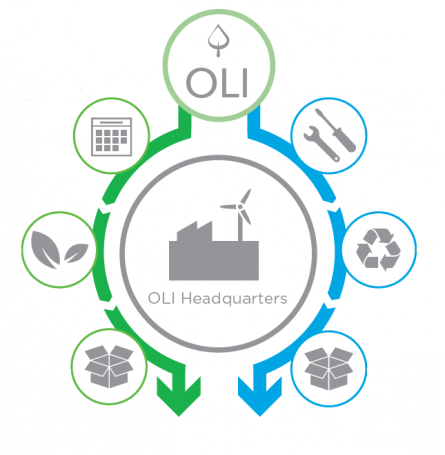OLI - An elegant food composter, designed using a considered approach to product lifecycle and disassembly
Autodesk Software Used:
Challenge Summary
The goal of the Cradle to Cradle Design Challenge was to eliminate the concept of “waste” by designing products with materials that may be perpetually cycled to retain their value as nutrients to fuel growing global economies.
Design Summary
The OLI food scraps bin is made from materials that are constantly available for recycling. Plastic bottles (PET) and aluminium cans contaminate ecosystems, but this design extends their life span through a product that gives back to the environment. OLI rests elegantly on the kitchen counter and allows users to collect compostable waste easily, and then cleanly and convenient transport it to their personal composting bin or their local collection site in neighborhoods or apartment complexes.

Autodesk Fusion 360
After building multiple cardboard models, Autodesk Fusion 360 was used to finalize all parts of the food scraps bin. The direct modelling capabilities of the program positively impacted the design process for OLI. The ability to iterate several models within one file made it easy and effective to compare multiple form and feature variations. The rollback tree allowed student designer Claire to jump back in the model and make quick adjustments, without having to start over, which can sometimes be the case in other computer modelling software. The cloud- based platform provided peace of mind that my model was always saved in its latest state and available to access from any computer.
The joint features were a necessity when it came to understanding how the parts worked and moved in and around each other. The animation tool allowed visualization of the process using OLI in real time, making sure that the relationships applied to different parts functioned as needed.

Since increasing environmental awareness is of utmost importance, OLI would offer consumers a discount in return for bottles, cans, and scrap aluminum. This provides a direct relationship between the consumer and the manufacturing of the product. Additionally, OLI would provide the consumer with the necessary shipping boxes if they decide they are finished with the product. This creates a direct flow of material to the company.
| Attachment | Size |
|---|---|
| 3.44 MB |

